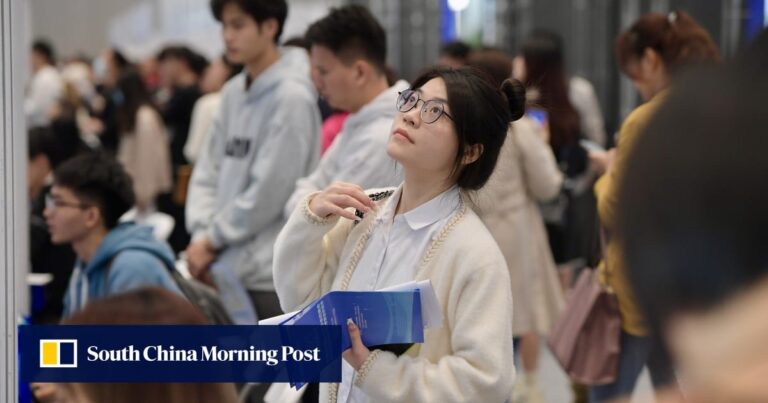This means that the number of employed people fell by 40,221 out of Shenzhen’s total workforce, which includes about 12 million residents, in 2022, the last time the city released its local unemployment rate.
The new quarterly unemployment rate does not include previously registered jobless figures, and many layoffs go unrecorded or unreported, leading to uncertainty over Shenzhen’s unemployment rate. The official tally measures only a small fraction of the total unemployed.
Unemployment is a growing concern clouding the outlook for the world’s second-largest economy amid a fragile economic recovery. The nationwide urban unemployment rate stood at 5 percent in May, unchanged from the previous month and down 0.2 percentage points from a year earlier.
However, experts in Shenzhen still said the rising unemployment rate was a “temporary phenomenon” in the city’s employment situation.
“Shenzhen’s job market is open and dynamic. The city is attractive to college graduates and job seekers, and as more people flock to the city, unemployment rises,” said Wang Mei, a senior public policy researcher at the China Development Academy, the city’s semi-official think tank.
But finding a satisfying job usually takes time, and there is often a mismatch between the job requirements and the job seeker’s skill set, Wang acknowledged.
“And in Shenzhen, China’s high-tech capital, jobs are likely to be more affected by technology than in other cities with the emergence of artificial intelligence… The shift to technology-driven development will see some jobs disappear before new opportunities arise,” she said.
Other analysts point to a changing employment picture.
“Due to digitalisation and the relocation of labour-intensive industries, the city’s service sector, including retail, is facing greater pressure to maintain jobs,” said Peng Peng, executive chairman of the Guangdong Reform Society, a Guangzhou-based think tank.
The city’s service industry, which includes retail, has historically been the largest employer, with a total workforce reaching 7 million in 2022, while manufacturing employed 4.6 million people in the same year.
However, retail sales growth in the first five months of 2024 was sluggish, rising just 1.8 percent year-on-year, a sign of the headwinds facing Shenzhen’s tertiary industry and employment.
Peng warned that the actual unemployment situation in Shenzhen and across the country requires further attention and action from authorities.
“There is a significant number of people who are underemployed,” Peng said.
There are concerns the unemployment situation in China remains unclear because it only tallyes those who are officially recorded or surveyed for unemployment, raising long-standing suspicions that figures are being concealed to whitewash the situation.
China’s government hopes that economic growth of about 5% in 2024 will create more jobs and help absorb record levels of college graduates, adding 11 million people to an increasingly crowded market of unemployed and underemployed workers.
“The government should foster a more favorable business environment for private and foreign companies,” Peng said.
Wang, of the China Development Institute, also called for policies to revitalize enterprises to unleash their potential for job creation.
“The third plenary session may see the launch of pro-employment policies and new initiatives,” she said. “The private sector and foreign companies are looking to see support from Beijing before they can create more jobs.”

